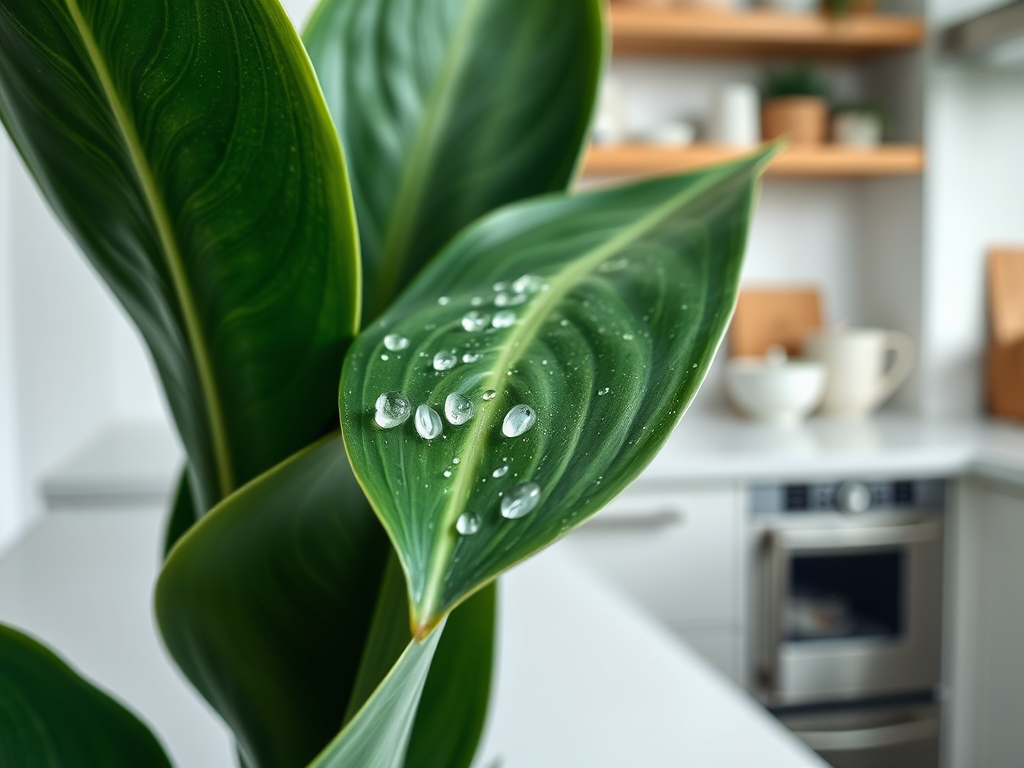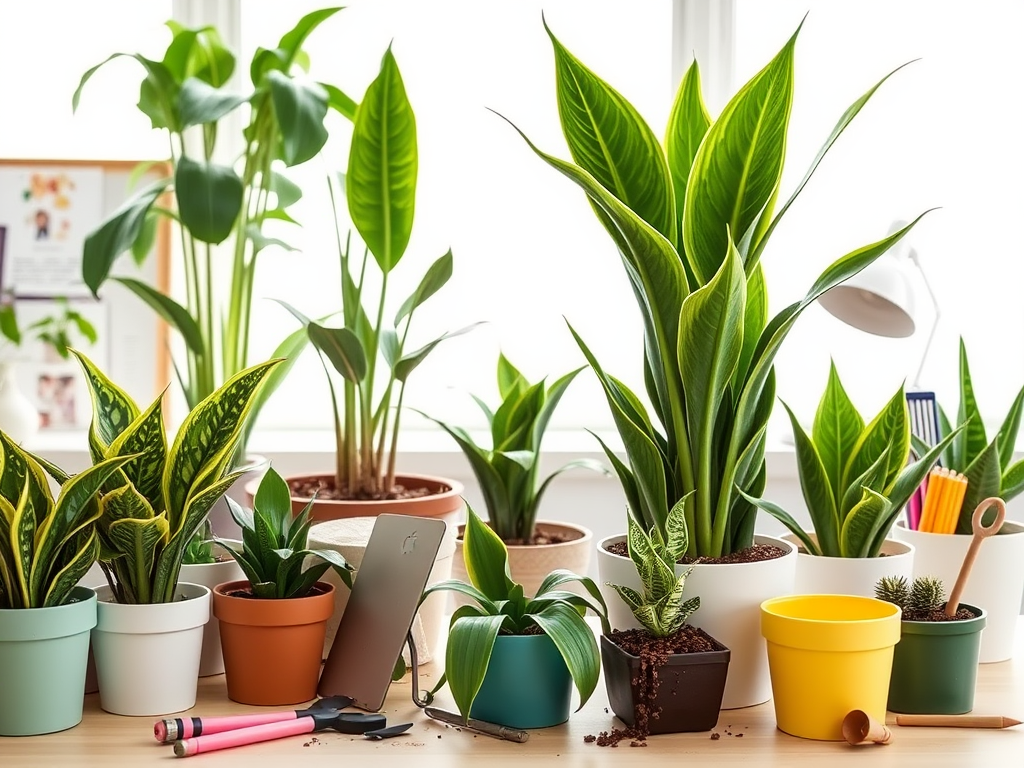When stepping into the fascinating world of houseplants, choosing the right species can make or break your experience. Many novice plant enthusiasts often find themselves overwhelmed with options, ultimately leading to their discouragement. Enter the snake plant, a true superstar among houseplants that balances beauty with ease of care. This resilient plant not only enhances your living space but also contributes positively to your indoor air quality. Its unique characteristics and minimal requirements make it a prime candidate for anyone starting their plant journey. Thus, the snake plant stands out, particularly in a society where busy schedules often put personal interests on hold.
The Characteristics of Snake Plants

Snake plants, also known as Sansevieria, are well-loved for their striking visual appeal and robust nature. These plants feature long, sword-like leaves that emerge vertically, adding a dramatic effect to any room. Furthermore, they come in various sizes and colors, making it easy to find an option that suits your style. Snake plants are perennial, meaning they return year after year, contributing to their reputation as a low-maintenance choice. Additionally, they are known for their ability to thrive in a variety of conditions, whether in dimly lit corners or sunny windowsills. Their adaptability makes them an attractive choice for any household.
One of the remarkable aspects of snake plants is their diversity. Ranging from the classic Sansevieria trifasciata, commonly known as the mother-in-law’s tongue, to more unique varieties like Sansevieria cylindrica and Sansevieria trifasciata ‘Moonshine,’ each type brings its own charm. These plants can sport vivid green leaves, often interspersed with sculptural markings of yellow or silver, creating a captivating aesthetic. This natural variety allows plant owners to curate different looks and feels in their home or office spaces. You can easily pair them with different interiors, from bohemian to modern minimalism, making them a versatile favorite. Most importantly, their low growth habit means they fit into tight spaces without becoming overwhelming.
Low Maintenance Requirements

Many beginners shy away from houseplants due to fears of excessive care requirements that can lead to stress or plant death. However, snake plants shine in this category, as they are renowned for their low maintenance needs. They can flourish with infrequent watering, and their resilience against neglect makes them exceptionally perfect for those with busy lifestyles. Additionally, snake plants can adapt to varied light conditions, thriving in both low light and bright indirect light. Their ability to withstand drought—sometimes going weeks without water—sets them apart from many other houseplants. With just a few basic care guidelines, even the most inexperienced plant owner can achieve success in cultivating these beauties.
Understanding the watering and light preferences of snake plants is crucial for their well-being. Below is a breakdown of their needs:
- Watering: Water every 2-6 weeks, depending on the season. Always let the soil dry completely between waterings.
- Light: Ideal conditions include bright indirect light, but they can survive well in low-light environments.
- Temperature: They prefer temperatures between 60°F and 80°F, making typical household climates suitable for their growth.
Health Benefits of Snake Plants
In addition to their visual appeal and ease of care, snake plants offer numerous health benefits that make them even more desirable. Research indicates that some houseplants can help purify the air by absorbing toxins. Snake plants are particularly effective at filtering harmful substances like formaldehyde, xylene, and benzene. This property is not only beneficial for the plant owner’s well-being but also for the overall indoor environment. The people adverse to allergens and toxins will particularly appreciate having snake plants in their homes. It’s fascinating how much a simple plant can improve air quality and enhance one’s living experience.
Studies conducted by NASA have shown that snake plants excel in their air purification abilities. Some key points to note:
| Toxin Filtered | Effect on Air Quality |
|---|---|
| Formaldehyde | Reduces symptoms of headaches and irritation in eyes and throat. |
| Xylene | May decrease potential risks of respiratory issues. |
| Benzene | Improves overall indoor air quality and reduces fatigue levels. |
Easy Propagation Methods
For those looking to expand their snake plant collection, propagation is as easy as pie. This feature adds to their appeal, allowing beginners to cultivate new plants effortlessly. Snake plants can be propagated either through leaf cuttings or by division, both of which are straightforward methods. Leaf cuttings involve severing healthy leaves and placing them in water or soil until roots form. Division, on the other hand, entails separating an established plant into smaller sections, each with roots and leaves. For beginners, these methods provide an accessible way to multiply their houseplant collection without the stress of complicated procedures. With just a little patience and care, you can watch your plant family grow!
Here’s a quick comparison of the two primary propagation methods:
- Leaf Cuttings: Cut healthy leaf into sections; place in water or soil to root.
- Division: Separate established plants when repotting; ensure each piece has roots and leaves.
Conclusion
In summary, snake plants present an unbeatable option for plant beginners due to their low maintenance requirements and notable health benefits. Their visual charm enhances the aesthetic of any space, providing a welcoming atmosphere. Coupled with their ability to purify the air and easy propagation techniques, they truly embody a high-reward houseplant choice. Whether you’re a newbie or just want a plant that doesn’t demand much time or effort, snake plants fit the bill perfectly. So, why wait? Dive into the wonderful world of this remarkable plant and enjoy the numerous advantages it brings.
Frequently Asked Questions
- Are snake plants safe for pets? No, snake plants can be toxic to pets if ingested.
- How often should I water my snake plant? Water your snake plant every 2 to 6 weeks, depending on the season and the environment.
- What type of light do snake plants prefer? Snake plants thrive in indirect light but can tolerate low light conditions.
- Can snake plants grow outside? Yes, snake plants can be grown outdoors in warm climates, but they should be protected from extreme temperatures.
- How do I know if my snake plant is healthy? Healthy snake plants will have firm, upright leaves with vibrant colors and no signs of pest infestations or discoloration.
